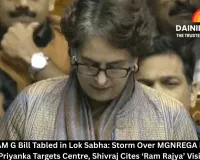Chhath Puja 2025 Begins Today: A Deep Dive into the Celestial Festival of Faith, Sun and Survival
Digital Desk
1.jpg)
Chhath Puja 2025 begins today! Dive into our ultimate guide to the four-day festival honoring the Sun God. Discover its ancient origins, profound rituals, scientific benefits, and the heartfelt stories of devotion from riverbanks across India and the diaspora.
As the first light of dawn breaks over the Ganga in Bihar, the Yamuna in Delhi, and countless other rivers, ponds, and water bodies across the Indian subcontinent today, a profound silence is pierced by the collective faith of millions. The air, crisp with the retreating monsoon and the approaching winter, carries the scent of wet soil, sugarcane, and devotion. Chhath Puja, the most ancient and austere of Vedic festivals, has commenced.
For the next four days, from October 25 to 28, 2025, the landscape of Northern India, especially Bihar, Jharkhand, Eastern Uttar Pradesh, and parts of Nepal, will transform into a sprawling, open-air temple. This is not just a festival; it is a cultural spectacle, a testament to human resilience, and a scientific marvel wrapped in the deep crimson folds of faith. It is a celebration where the devotee, primarily women, becomes one with the elements, offering gratitude and seeking blessings from the source of all life the Sun God, Surya, and his consort, Chhathi Maiya.
1.jpg)
Day 1: Nahay Khay (October 25, 2025) – The Purification Begins
The festival kicks off with Nahay Khay, a day of purification and preparation. As the name suggests (‘Nahay’ meaning bath and ‘Khay’ meaning food), devotees, known as Vratis, take a holy dip in a river or pond, often at sunrise. They then bring home the sacred water to purify their surroundings and prepare the ritualistic food.
The entire household undergoes a transformation. Homes are scrubbed clean, and the kitchen becomes a sacred space. On this day, the Vrati consumes only one meal. The traditional fare is simple, satvik (pure), and cooked without onion or garlic. A typical meal includes boiled chickpeas, bottle gourd curry (lauki ki sabzi), and whole wheat chapatis baked on a mud stove (chulha). This meal signifies the beginning of a 36-hour long rigorous fast that the main observer, usually the woman of the house, will undertake after the following day's ritual.
The Vrati: The Pillar of Chhath
At the heart of Chhath Puja is the Vrati—almost always a woman. She is a mother, a wife, a daughter, or a sister who takes upon herself this immense physical and spiritual challenge for the well-being and prosperity of her family. Her determination is the engine of the entire celebration. For these four days, she becomes an ascetic, distancing herself from worldly comforts, sleeping on the floor, and maintaining a strict code of conduct that encompasses her thoughts, words, and actions.
“This is not just a fast; it is a sadhana (spiritual practice),” says 58-year-old Sharda Devi from Patna, who has been observing Chhath for over 40 years. “We pray for our children’s health, for the family’s unity, and for peace in the world. The Sun God sees our sincerity and blesses us abundantly. The fatigue vanishes when you see your family happy and healthy.”
Day 2: Kharna (October 26, 2025) – The Day of Sacred Sweetness
The second day, Kharna, is a day of intense fasting without even a drop of water. The Vrati observes a Nirjala Vrat (waterless fast) throughout the day, breaking it only after sunset following a special worship ceremony.
As dusk approaches, the family gathers to prepare the Prasad (holy offering). The star of this offering is the kheer (rice pudding) made from locally sourced jaggery and rice, poured into earthen bowls and served with puri (deep-fried bread). The entire process is a community effort, filled with a sense of shared purpose.
After offering the kheer and puri to the rising moon and Chhathi Maiya, the Vrati breaks her fast with this sacred meal. This Prasad is also distributed among family, friends, and neighbors. The taste of this simple meal, after a day of complete abstinence, is said to be divine, symbolizing the sweetness of devotion and the fulfillment that comes from discipline.
“The kheer of Kharna is unlike any other,” explains Rohan Kumar, a young IT professional who flies home to Muzaffarpur every year for the festival. “It’s not just about the ingredients. It’s infused with my mother’s love and her unwavering faith. Eating that prasad feels like receiving a direct blessing. It’s the taste of my childhood, the taste of home.”
Day 3: Sandhya Arghya (October 27, 2025) – The Sunset Offering
The third day is the most dramatic and visually stunning of all—Sandhya Arghya, the evening offering to the setting sun. This is the day when the riverbanks come alive in a carnival of devotion.
Throughout the afternoon, families begin their procession towards the water bodies. The scene is a vibrant tapestry of color and sound. Women, dressed in bright yellow and orange sarees—the colors of the sun—walk gracefully with bamboo baskets (soop and daura) laden with offerings. The soop is filled with fruits, especially the big, fragrant thekua (a traditional cookie), sugarcane, coconuts, ginger, and seasonal fruits like lemons and bananas.
The entire family accompanies the Vrati. Men carry the heavy baskets, children excitedly run along, and elders walk steadily, their faces etched with a lifetime of participating in this tradition. The air resonates with the sound of thousands of voices singing ancient, melodic Chhath songs, folk tunes that speak of Chhathi Maiya’s glory, the Sun God’s benevolence, and the stories of creation.
The Ritual at the Ghat
Upon reaching the ghat (riverbank), the Vratis and their families wade into the water, standing waist-deep for long periods. As the sun begins its descent, painting the sky in hues of orange and purple, a collective hush falls over the crowd. The moment of offering has arrived.
The Vrati stands facing the setting sun, holding her soop of offerings. With the help of her family, she offers Arghya—libations of water and milk—to the Sun God. The entire congregation follows suit, creating a breathtaking spectacle of thousands of hands raised in unison, offering gratitude to the celestial body that sustains life on Earth.
The symbolism is profound. The setting sun represents the cycle of life, the end of a phase, and a reminder of the transient nature of the world. By offering prayers to the setting sun, devotees acknowledge this cosmic cycle and pray for the removal of obstacles and the destruction of negativity.
“Standing in the water with hundreds of other women, all of us singing the same prayers, feeling the cool water and the warm sun on our faces—it’s an indescribable feeling,” shares Priyanka Singh, a first-time Vrati from Delhi. “You feel a connection—to nature, to the universe, and to every single person around you. It’s a powerful, humbling, and empowering experience all at once.”
After the offering, the devotees return home, but the fast continues. The night is spent in vigil, with families singing Chhath songs and listening to the Chhath Vrat Katha (the story of the fast).
Day 4: Usha Arghya (October 28, 2025) – The Dawn of New Hope
The final day of Chhath Puja, Usha Arghya, is the offering to the rising sun. In the pre-dawn darkness, the processions to the riverbanks begin again. This time, the atmosphere is different—filled with the anticipation of culmination and the promise of a new beginning.
As the first sliver of light appears on the horizon, the Vratis, once again, step into the water. With the same bamboo baskets, now filled with fresh offerings, they wait patiently for the sun to rise. The moment the golden orb breaks the horizon, a wave of joyous energy sweeps through the crowd. The Arghya is offered to the rising sun, symbolizing the beginning of a new era, the infusion of energy, and the blessing of life, prosperity, and intelligence.
The rising sun represents growth, enlightenment, and the dispelling of darkness. By worshipping the dawn sun, devotees pray for longevity, well-being, and the prosperity of their offspring.
Following the Usha Arghya, the Vratis break their 36-hour long fast by consuming the Prasad. The distribution of Prasad is a significant event, marking the end of the arduous spiritual journey. The sense of community is palpable as people share the blessed food, embracing each other and exchanging greetings of “Chhath Puja ki Jai” and “Chhathi Maiya ki Kripa” (Blessings of Chhathi Maiya).








.jpg)


